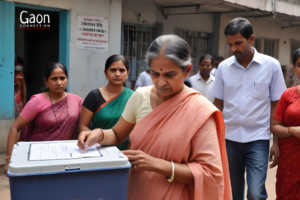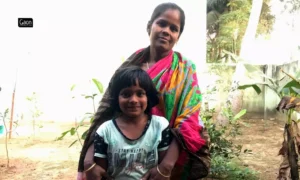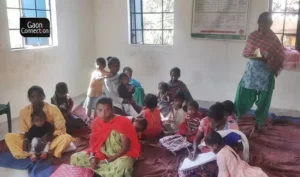Khetolai-Thar (Pokhran), Rajasthan
“Today at 1545 hrs, India conducted three underground nuclear tests in the Pokhran range…”
This was the Indian Prime Minister Atal Behari Vajpayee speaking at 6 pm on May 11, 1998 when India successfully carried out her first underground nuclear tests since the ‘peaceful nuclear test’ of 1974. These nuclear tests in Pokhran, Rajasthan gave India the tag of a nuclear superpower.
Celebrations erupted across the country and the residents of Khetolai village, located about three kilometres from the tests site, were jubilant. They had felt the earth shake three times in five seconds when the tests were conducted.
It was 24 years ago, but they continue to narrate stories of the D-Day with great pride. But, despite the fact that it shot into the limelight, and made India a leader in nuclear energy, the village, which lies about 110 kms away from Jaisalmer, remains underdeveloped and under-resourced.
“There are no street lights and the village is plunged into darkness in the evenings. We have drinking water supply once in five or six days and our only source of livelihood is the cattle we have,” Sunil Bishnoi, a 35-year-old truck driver from Khetolai, told Gaon Connection. “And, for any extra water, the villagers have to buy water paying up to Rs 500 per tanker of water that comes from neighbouring villages,” he added. The water is brought in tankers from those villages that have enough water in them to sell.
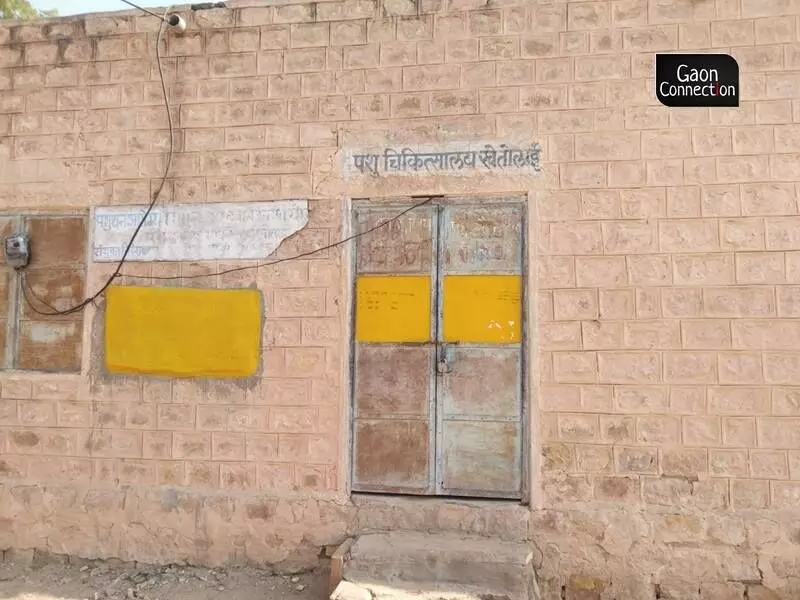
On the main street of the village is the Primary Health Centre (PHC), and an animal hospital but they are have been unopened for a while.
“In all these years after the parmanu parikshan [nuclear tests], no one from the government administration has come here to find out how we are doing,” Sunil Bishnoi added. According to him, his village Khetolai, that made India a nuclear super power, was beset with problems.
No water, either to drink or to irrigate
According to the 2011 census, the population in Khetolai was 1,698. There is a small pond in the village, but that dries up every time there is insufficient rain, complained the local villagers.
The little cultivation of bajra, jowar and other millets they do is completely rain-dependent. Even after digging 5,000 metres, no water was found here (which was one reason it was chosen for the nuclear test).
While the villages that are located near the Indira Gandhi Canal get water for irrigation purposes, Khetolai is still waiting, high and dry. This canal is the longest canal in India. It starts at the Harike Barrage near Harike, a few kilometres downriver from the confluence of the Satluj and Beas rivers in Punjab state, and ends in irrigation facilities in the Thar Desert in the northwest of Rajasthan state.
Irrigation water aside, the residents of Khetolai, a desert village, face acute drinking water scarcity.

While the villages that are located near the Indira Gandhi Canal get water for irrigation purposes, Khetolai is still waiting, high and dry.
“We have the water pipelines laid, but they do not have a drop of water in them,” Barju Devi, told Gaon Connection. “Once in 15 days we have to buy water. We own five cows and our requirement is quite a bit,” the 58-year-old added.
In 2019, The Indian government launched its Har Ghar Jal Yojana to provide tap water to every rural household by 2024. As per the latest data of the government, only about 30 per cent rural households in Rajasthan have functional tap water connection.
In Jaisalmer district, where Khetolai is located, the tap water coverage is 6.65 per cent only.
“Three big water pipelines were laid in the village, but they have not yet been connected to any taps,” Arvind Kumar Meghwal, a 25-year-old resident of Khetolai, told Gaon Connection.
The work of laying the pipelines is in progress, said Mahesh Sharma, executive engineer supervising the work between Pokhran and Phalsund, a 68 odd kilometre stretch.
“Already, 3,000 kilometres of pipeline are in the process of being laid in the areas in and around Khetolai. We received the work order for it in April this year,” he told Gaon Connection. According to him, there is still some work to be done in Khetolai which should be completed in about 15 months.
Non-existent healthcare
On the main street of the village is the Primary Health Centre (PHC), and an animal hospital. But the dust and garbage including discarded syringes lying outside the PHC, indicated that it had remained unopened for quite some time.
On November 10, when Gaon Connection first, visited Khetolai and asked a few passers by about the PHC, most said that it was usually shut.
“There is supposed to be two male and one female nurse, but they show up only once in a while. The post of the doctor is yet to be filled,” said Duraram Bishnoi, who tends to cattle, told Gaon Connection.
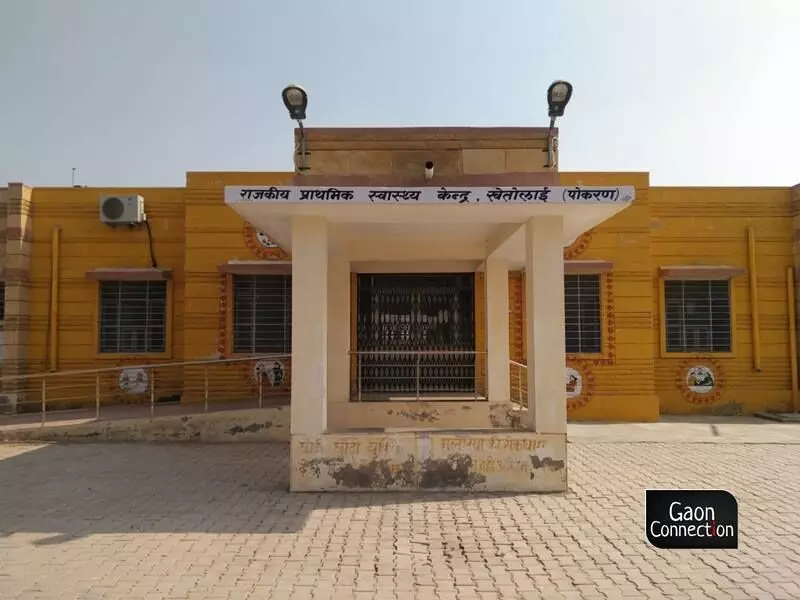
According to the villagers, if anyone fell sick they had to travel 25 kilometres to Pokhran and if they could not be treated there, they had to travel a further 200 kms to Jodhpur.
Also Read: Fodder Crisis: ‘We can’t give our cattle to butcher. We gradually starve them to death’
Similarly, the animal hospital was shut too at about 1 pm the day Gaon Connection visited the village. There was however the name and number of the newly appointed vet, Pradeep Kumar. “I am in Dholiya village attending to a sick cow. I was at the hospital before that,” the vet told Gaon Connection, on the phone.
According to data from the Western Rajasthan Milk Production State Co-operative Society, Khetolai has 5,000 cows, 500 camels and 200 sheep. The village has perhaps the highest number of livestock in the district, said the villagers.
“When cattle in the village were hit by the deadly Lumpy disease, more than two thousand cows died. The government department could do nothing to bring the disease under control. And, at that time, there was not a single doctor at the centre,” Joraram Bishnoi, a cattle rearer, complained to Gaon Connection.
When the village shot into global prominence post the nuclear tests in 1998, there were hopes that the government would bring some development and progress to the area, said villagers.
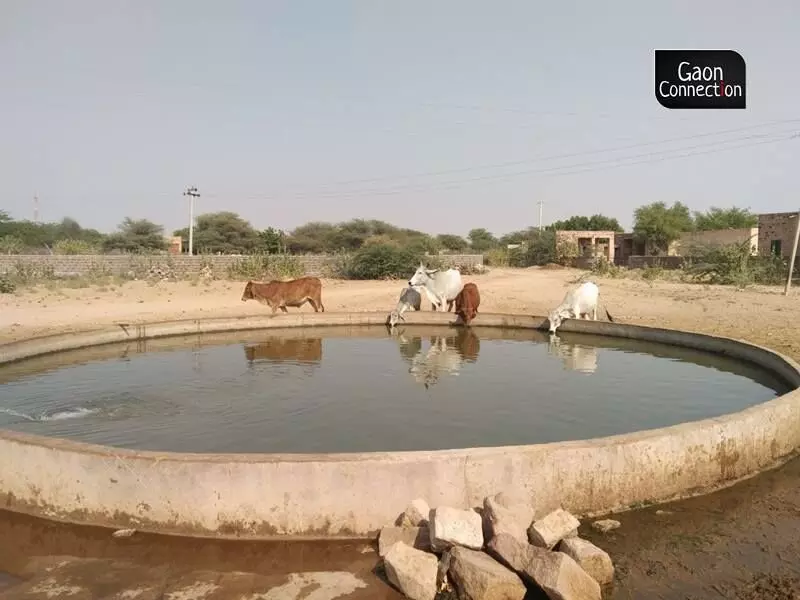
When cattle in the village were hit by the deadly Lumpy disease, more than two thousand cows died.
“But in a few years we realised that nothing was going to happen. When Prime Minister Atal Bihari Vajpayee visited Khetolai in 1998, the whole village went to the helipad to represent their problems. But we were driven away and not allowed to meet him,” Nathuram Bishnoi, former sarpanch of the village, told Gaon Connection.
Recollecting the days preceding the nuclear test, Nathuram said, “We knew something big was being planned in our village as there were more army personnel and vehicles in the village than the villagers themselves.”
Also Read: A Journey With Kabir: Bhakti music enthrals ‘pilgrims’ of the Rajasthan Kabir Yatra
Still living in thatched huts
Some of the village inhabitants continue to live in thatched homes, despite the Pradhan Mantri Awas Yojana- Gramin that pledged to provide ‘Housing for All’ by 2022 in the rural areas.
“When village development officials carried out a survey in Khetolai in 2019-20, they declared that all inhabitants here were educated and well off,” Dhannaram, a village inhabitant, told Gaon Connection. And, that is one reason why the Awas Yojana could not be availed of, he said.
But, Kamala Devi still lives with her family in a kaccha hut. As does another villager, Giridhari Ram. “I recently borrowed money and built a room. But there is no toilet and neither do the rooms have any plaster on the walls,” Giridhari Ram told Gaon Connection.
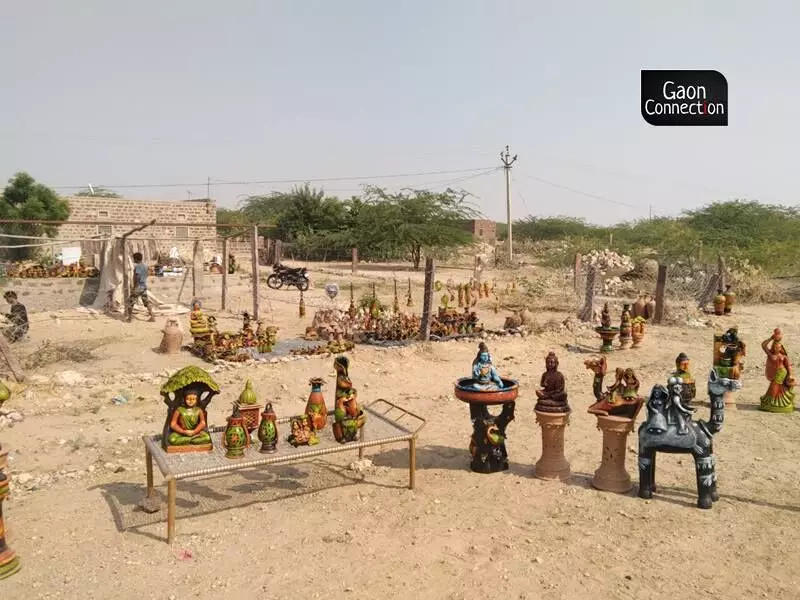
According to the villagers, if anyone fell sick they had to travel 25 kilometres to Pokhran and if they could not be treated there, they had to travel a further 200 kms to Jodhpur.
“When the survey was carried out in 2018-19, I was not associated with this village, so I cannot comment on why these people’s names did not come up in the survey,” Gulab Singh, village development officer, told Gaon Connection. But he said that along with the sarpanch of Khetolai, he has drawn up a list of names identifying those people and they will be reflected in the next survey.
Youth falling prey to online gambling
There are other grave repercussions of the neglect the village finds itself in.
“With no other occupation available to them, many of the young people in Khetolai, if they have not left the village to find a livelihood elsewhere, have taken to online gambling,” Manoj Jani, a 21-year-old youth, told Gaon Connection.
“They squander money on games such as online rummy and online eleven. And, the age-old practice of bringing opium from Chittorgarh and selling it here and nearby villages, continues. It has become the primary occupation for youth in the village,” Jani said.
When asked about the incidence of drugs and gambling in the village, Ashok Bishnoi, the police station-in-charge, told Gaon Connection that he was currently unaware of any such activities.
When asked about the problems the village faced, Pramod Kumar Gill, the sub-divisional officer, Pokharan said that he had only recently taken up his post. “I am not yet fully aware of the problems in this area. However, I will visit Khetolai, take stock of the situation there, and do the needful,” he told Gaon Connection.
Also Read: Conversation About Periods: Girls in rural Rajasthan show the way







